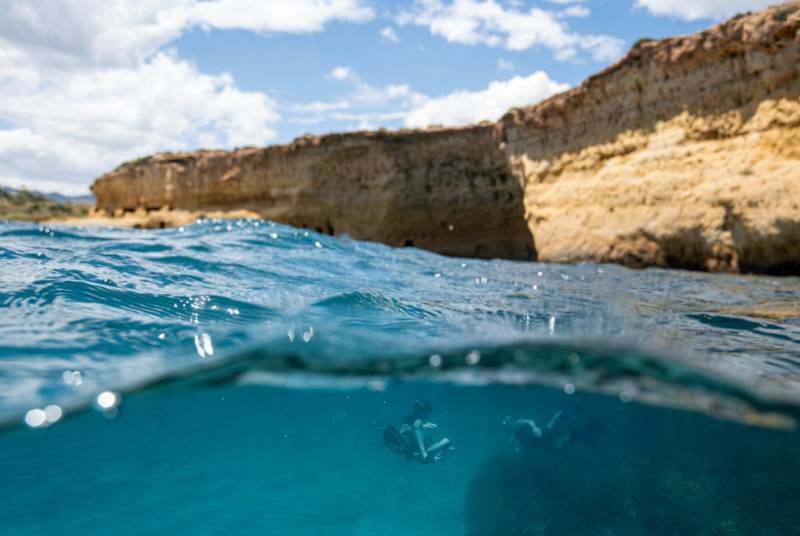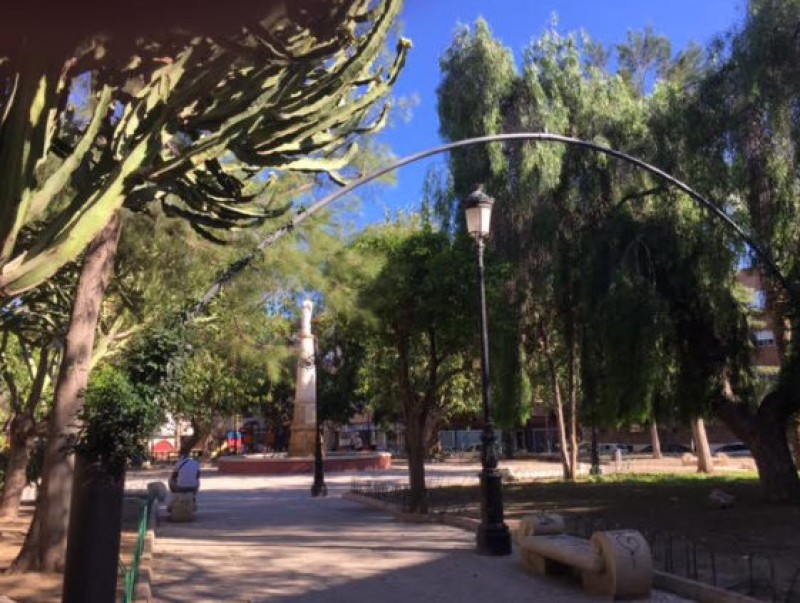- Region
- Vega baja
- Marina Alta
- Marina Baixa
- Alicante
- Baix Vinalopo
- Alto & Mitja Vinalopo
-
ALL TOWNS
- ALICANTE TOWNS
- Albatera
- Alfaz Del Pi
- Alicante City
- Alcoy
- Almoradi
- Benitatxell
- Bigastro
- Benferri
- Benidorm
- Calosa de Segura
- Calpe
- Catral
- Costa Blanca
- Cox
- Daya Vieja
- Denia
- Elche
- Elda
- Granja de Rocamora
- Guardamar del Segura
- Jacarilla
- Los Montesinos
- Orihuela
- Pedreguer
- Pilar de Horadada
- Playa Flamenca
- Quesada
- Rafal
- Redovan
- Rojales
- San Isidro
- Torrevieja
- Comunidad Valenciana
article_detail
Outlying districts of Mazarron, Balsicas
The coastal district of Balsicas includes El Alamillo close to Puerto de Mazarrón
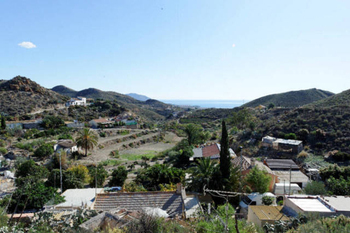 Balsicas is a small village 7 kilometres south-east of the town of Mazarrón and just outside Puerto de Mazarrón. The district bearing the same name extends to the coast and includes the El Alamillo residential development and its beach.
Balsicas is a small village 7 kilometres south-east of the town of Mazarrón and just outside Puerto de Mazarrón. The district bearing the same name extends to the coast and includes the El Alamillo residential development and its beach.
The history of this part of Mazarrón goes back to the Roman era, as the remains of villas and salt fish tanks found in El Alamillo clearly illustrate.
Roman remains in Balsicas: El Alamillo
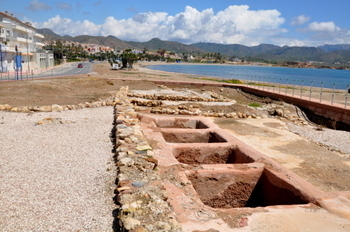
One of these buildings has been found on the beachfront of El Alamillo, and consists of a Roman industrial villa and salt fish tanks. The layout is clearly visible and the tanks are very well preserved Roman Villa El Alamillo)
Other remains have been found on the hill of Loma del Alamillo, where the remnants of a sanctuary and a Roman road have been unearthed, while in the ponds after which Baliscas is named there was a machine designed and used for distributing water. Together with the Roman site found near Balsicas itself, these diverse discoveries show that the area was important for the Romans between the 2nd century BC and the 3rd century AD.
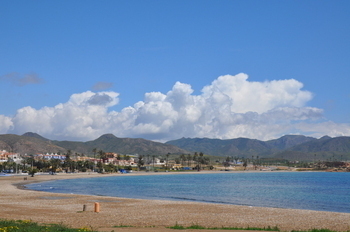
Balsicas was included in the territory of Mazarrón when the municipality became independent from Lorca in 1572, and the area continued to be used for growing crops, thanks to a small spring which was also used by those who lived near the shore.
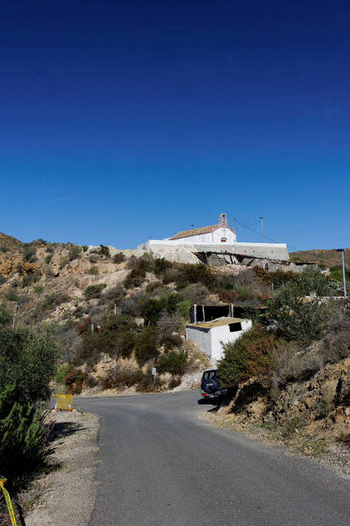 In the 18th century the Acueducto del Arco was built, transporting water from the spring at El Alamillo to the farms and estates near Los Lorentes. This aqueduct was built of stone, and remained in use until the second half of the 20th century, when the spring dried up.
In the 18th century the Acueducto del Arco was built, transporting water from the spring at El Alamillo to the farms and estates near Los Lorentes. This aqueduct was built of stone, and remained in use until the second half of the 20th century, when the spring dried up.
The Ermita de la Purísima Concepción was also built at this time and the main centre of the village grew up around it.
The economy of the population revolved around agriculture, with each household owning land on which crops were grown. Most of the households had small fruit and vegetable gardens, and also owned farm animals. By the second half of the 19th century one of the houses included a small schoolroom, where pupils were able to combine their daily labour on the family farm with their elementary studies.
The lack of water and food made the first half of the 20th century a period of hardship, and the situation was not improved by the outbreak of the Civil War in 1936. The area was bombed on various occasions, possibly as a result of planes dropping bombs they had failed to release over Cartagena, and many houses and infrastructures were damaged or even destroyed.
As was the case in so many other areas, Balsicas went through a difficult time in the first half of the 20th century, but after the immediate post-war period it made a sound recovery thanks to the expansion of agriculture. In the 1950s, Balsicas benefited from a few years of heavier rainfall which improved agricultural production. In the context of the ensuing economic recovery the inhabitants were awarded a new school by the municipal development plan of 1958, and this also helped the growth of the area.
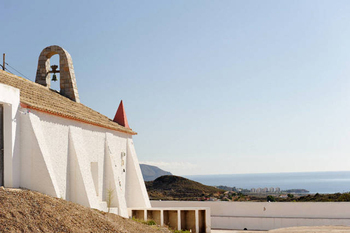 In the 1960s and 70s the domestic tourist boom reached Mazarrón, and the whole of the municipality grew wealthier. The effects in Balsicas were immediate, with the population being increased thanks to the construction of holiday homes in the area.
In the 1960s and 70s the domestic tourist boom reached Mazarrón, and the whole of the municipality grew wealthier. The effects in Balsicas were immediate, with the population being increased thanks to the construction of holiday homes in the area.
In the 80s and 90s, though, the population dwindled, as the younger generations were drawn away by the modernization of the nearby Puerto de Mazarrón and the search for employment in larger towns. The residential development of El Alamillo has meant that the economic and demographic centre of Balsicas has moved to the coast, and the village of Balsicas itself has assumed secondary importance.
In 2021 there were 1,252 residents on the municipal Padrón for Balsicas (almost half of them non-Spanish Europeans), many of them in El Alamillo rather than in Balsicas itself, and in summer the population grows enormously as holiday-makers flock to the Mediterranean coast.
Fiestas in Balsicas, Mazarrón
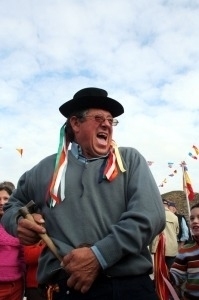 The most noteworthy fiesta in Balsicas is the annual Concurso de Rebuznos, or Braying Competition, which has been held for over two hundred years in the Plaza de la Ermita on the Día de los Santos Inocentes (28th December), the equivalent of April Fools' Day in Spain.
The most noteworthy fiesta in Balsicas is the annual Concurso de Rebuznos, or Braying Competition, which has been held for over two hundred years in the Plaza de la Ermita on the Día de los Santos Inocentes (28th December), the equivalent of April Fools' Day in Spain.
This is one of the most bizarre traditions in the Region of Murcia, and features competitors dressed in traditional costumes, mainly black, with coloured ribbons and all the tools necessary for grooming a donkey and shoeing it. They walk around the square braying like donkeys, while at the same time imitating the movements of donkeys while being groomed and shod.
The unusual celebration apparently owes its existence to an incident at the end of the 18th century, when the donkeys carrying materials up the hill protested at the weight of their load and the steepness of the slope by lying down for a rest, all except one, who felt strong enough to bray loudly, apparently asking for more work. In recognition of the donkey's hard work and that of its fellow animals in the fields, the inhabitants adopted this curious celebration.
Nowadays the competition is a way of raising funds for the maintenance of the church. The first person to be brayed at is traditionally the parish priest, and after that people can pay a fee to have their friends and family brayed at by the specialist Brayers.
The tradition was lost during the Civil War, recovered after it, stopped again in the 1990s and re-started in 2003 by the local "Brayers"..
Property in Balsicas and El Alamillo, Mazarrón
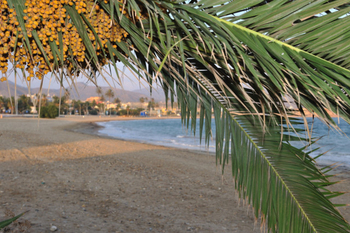 There is a wide range of options available to those buying property in Mazarrón, with seaside homes, modern holiday apartments, inland villages, the Camposol development and small coastal villages, so it is important for anyone looking to be clear in their minds before they start exactly what they, as individuals, feel they need from a property.
There is a wide range of options available to those buying property in Mazarrón, with seaside homes, modern holiday apartments, inland villages, the Camposol development and small coastal villages, so it is important for anyone looking to be clear in their minds before they start exactly what they, as individuals, feel they need from a property.
In simple terms Balsicas has two different forms of accommodation to offer, the village itself and the modern urbanisation of El Alamillo.
The village is split into two parts, one a more sprawling cluster of houses, and the old village, tightly clustered around the little church and the hill on which it stands. It´s not the prettiest of villages, but is a tight-knit community, and the views are stunning from church out to sea. Some of the old properties require considerable modernisation.
El Alamillo offers modern accommodation and is a popular choice among expats, as the properties are well-dimensioned the urbanisation right next to the beach and within easy walking distance of the facilities of Puerto de Mazarrón. Numerous people live here throughout the year, and there are many expats in the surrounding areas.
(Image of the rebuznos by Tomás García)
Location of Balsicas in Mazarrón
For more local information including news, what's on and what to see go to the home page of Mazarrón Today.
article_detail
Contact Murcia Today: Editorial 000 000 000 /
Office 000 000 000





